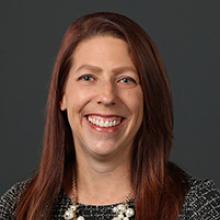Design Programs to Succeed Anywhere | GTL Center

The READI Framework: Closing Gaps by Addressing the Needs of Underserved Schools
Underserved schools often have fewer resources and less capacity to rigorously implement improvement strategies. As a result, the districts and schools that most need support programs are often least likely to adopt and implement them successfully—a phenomenon that we call the “needs paradox.”
Creating READIness
- Explore our poster for a one-minute look at the READI Framework
- Read our 5-minute READI Framework overview.
This paradox is amplified when states or districts overlook underserved schools for district or state-wide improvement initiatives because of their perceived lack of “readiness.”
To address the needs paradox, we created the READI Framework. Instead of viewing readiness as a mechanism to sort schools out of programs, the framework helps states and districts flip their focus and define readiness by assessing how well the improvement program is designed to target the specific needs of underserved schools.

The READI Framework guides states and districts through five key barriers to consider as they design programs and related supports for success in the highest need schools. These design considerations help education leaders tailor programs to surface and accommodate the unique characteristics of underserved schools and have the potential to positively impact achievement gaps.
Top Resources

The READI Framework: Closing Gaps by Addressing the Needs of Low-Performing Schools (GTL Center Working Paper, April 2020)
Explore the "readiness paradox," as well as the research and evidence behind the GTL Center's emphasis on designing programs to succeed anywhere, and especially in the schools that need them most.

Flipping the Readiness Paradigm (Special Issues Brief, September 2019)
What does the READI Framework look like in practice? Explore this brief to see how the GTL Center has applied the READI Framework as a model in improving mentoring and induction programs and addressing educator shortages in underserved schools.
Featured Project

National Collaborative on Educator Workforce Shortages and Diversity
To support states in addressing urgent educator workforce challenges, from 2022-2024, the Center engaged three state teams from Hawai'i, Ohio, and Louisiana to participate in a National Collaborative. This two-year, data-driven facilitated coaching process helped cross-agency, state teams understand the root causes of shortages and gaps in educator workforce diversity and find solutions that are equity-focused and built for sustainability.

